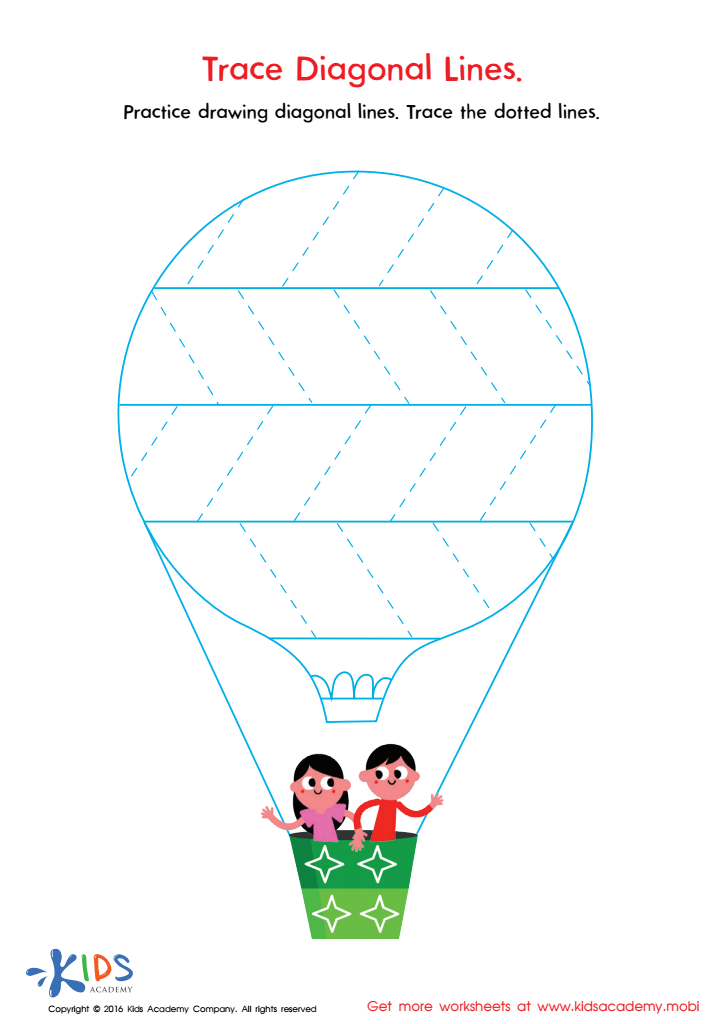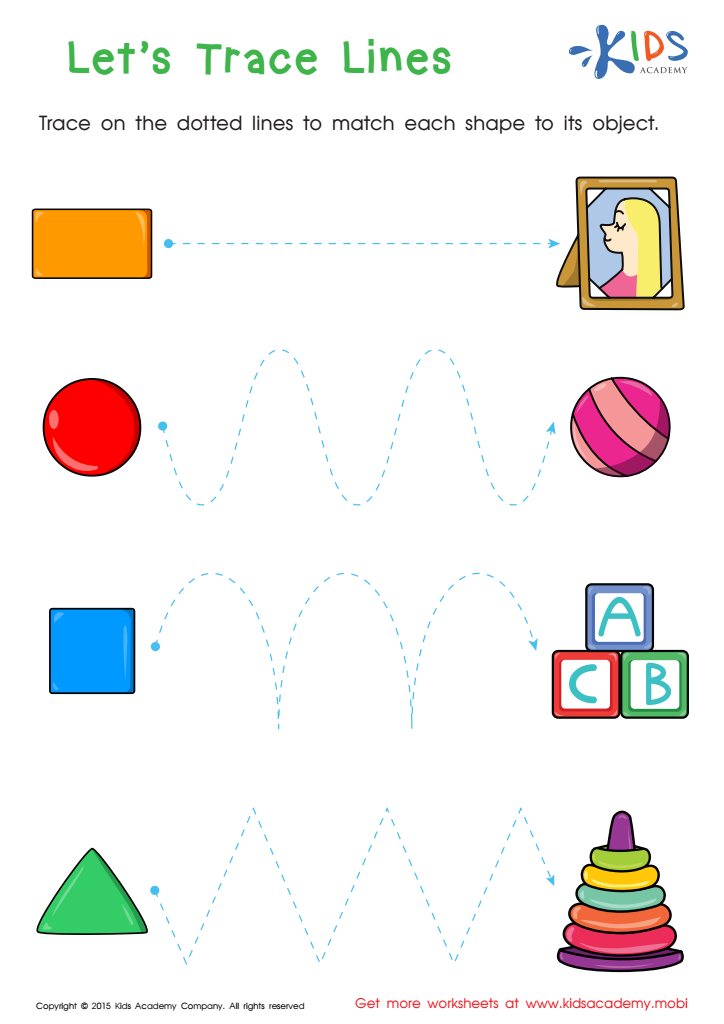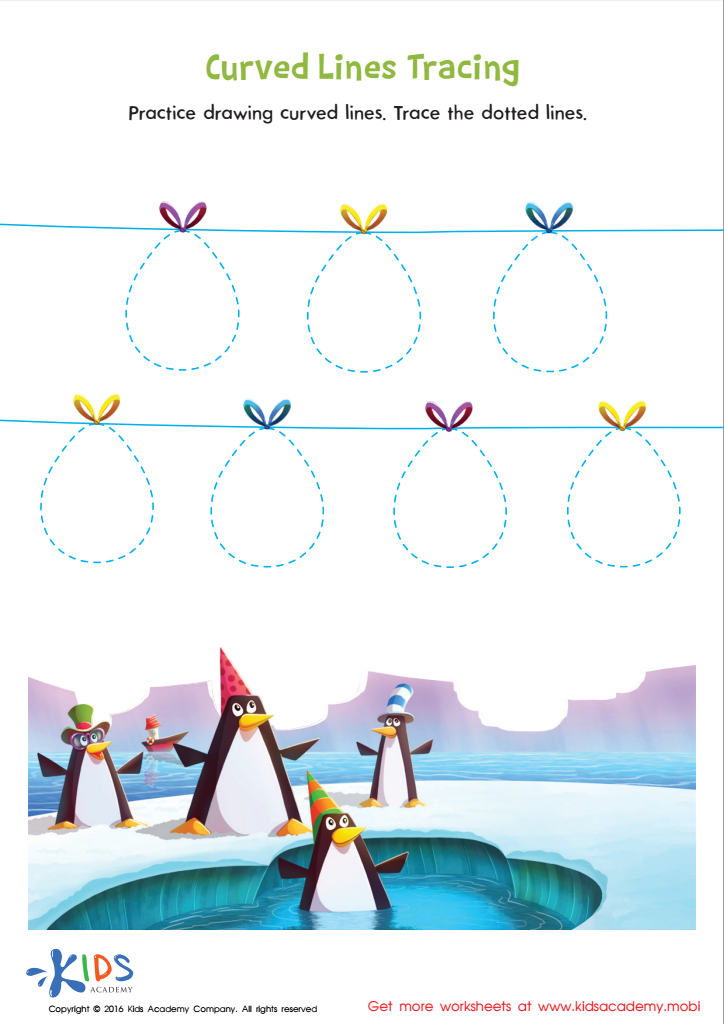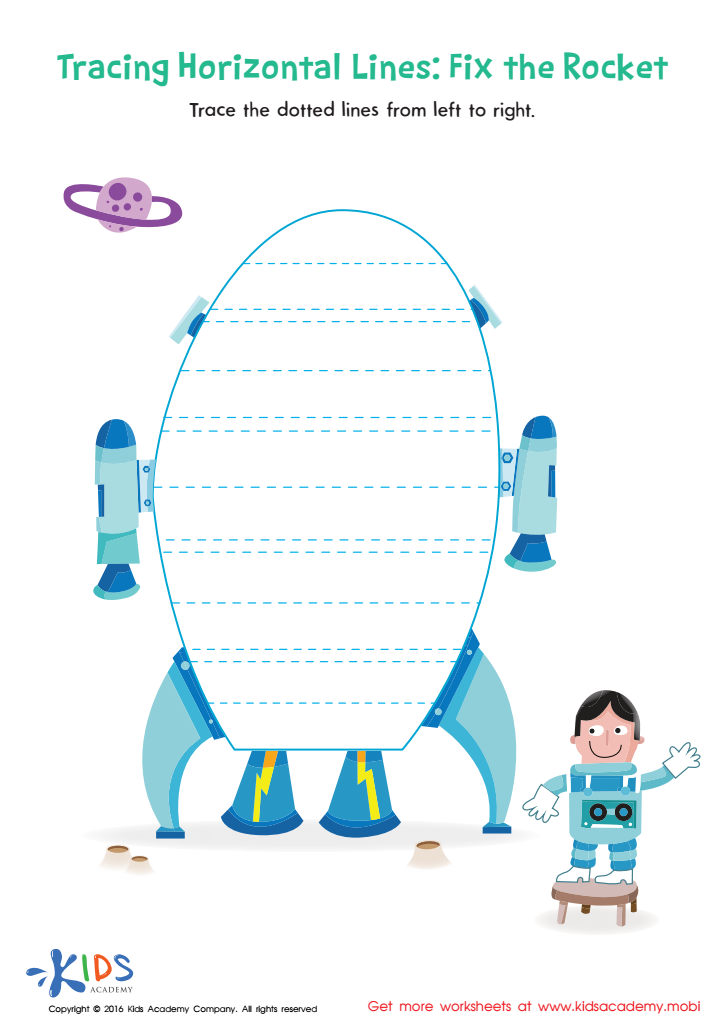Pre-writing skills Tracing Lines and Curves Worksheets for Ages 3-9
5 filtered results
-
From - To
Discover our engaging "Pre-writing Skills Tracing Lines and Curves Worksheets" specifically designed for children ages 3-9. These fun and educational worksheets help young learners develop essential pre-writing skills, including hand-eye coordination, fine motor control, and the ability to recognize and trace various lines and curves. Perfect for preparing preschoolers and early elementary students for writing success, our activities incorporate playful themes and colorful visuals that maintain children's interest and motivation. Enhance your child's writing readiness with our expertly crafted tracing worksheets and give them the confidence to excel in their educational journey. Start today and watch them thrive!


Trace Diagonal Lines Worksheet


First Words: Let's Trace Lines Worksheet


Curved Lines Tracing Worksheet


Tracing Horizontal Lines Worksheet


Tracing Lines Worksheet
Pre-writing skills, such as tracing lines and curves, form the foundation for later handwriting abilities essential for effective written communication. For children ages 3-9, mastering these skills is crucial for several reasons.
Firstly, pre-writing includes fine motor skill development which enhances the coordination of small muscles in the hands and fingers. Tracing exercises help strengthen these muscles, making it easier for children to control a pencil and form letters accurately. This early development can reduce future handwriting struggles and frustration.
Secondly, tracing lines and curves fosters cognitive growth by engaging a child's hand-eye coordination and visual perception skills. As children follow a line or outline a shape, they learn to visually track and mentally process spatial relationships, an essential skill for reading and mathematic problem-solving.
Moreover, these early pre-writing activities also encourage focus and attention to detail. Following a traced path requires concentration, which in turn, helps build a child's ability to maintain attention on tasks for more extended periods, a skill that extends beyond handwriting into all areas of learning.
Parents and teachers play vital roles in initiating these activities to pave the way for a child's academic success. Their involvement demonstrates to children that effort put into foundational skills is valued, setting a positive attitude towards persistence in learning. Encouraging regular practice can make all the difference in a child’s trajectory of literacy and educational confidence.

 Assign to My Students
Assign to My Students












